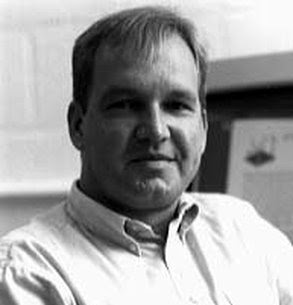 Andre Nel, M.B.Ch.B., Ph.D. - Chief, Division of NanoMedicine, California NanoSystems Institute Andre Nel, M.B.Ch.B., Ph.D. - Chief, Division of NanoMedicine, California NanoSystems Institute
Professor, Medicine. Director, UC NanoToxicology Research Training Program
Member, California NanoSystems Institute, JCCC Signal Transduction and Therapeutics Program Area | UCLA, partners establish new center on environmental effects of nanotechnology, Center based at UCLA's California NanoSystems Institute gets $24 million from EPA, NSF to focus on nanomaterials safety and risk assessment.
UCLA and 12 collaborating institutions have been awarded $24 million in federal funding to establish the University of California Center for Environmental Implications of Nanotechnology (UC CEIN), which will help researchers design safer and more environmentally benign nanomaterials.
The center, to be housed at the California NanoSystems Institute (CNSI) on the UCLA campus, will explore the impact of nanomaterials on life forms and the interactions of these materials with various biological systems and ecosystems. |
Funding was awarded by the National Science Foundation and the U.S. Environmental Protection Agency following a highly competitive application and review process.
With the rapid development of nanotechnology and its applications, a wide variety of nanomaterials are now used in clothing, electronic devices, cosmetics, and pharmaceuticals and other biomedical products. The potential interactions of nanomaterials with living systems and the environment have attracted increasing attention from the public, as well as from manufacturers of nanomaterial-based products, academic researchers and policymakers. Nanotechnology is expected to become a $1 trillion industry within the next decade.
"UCLA and its partners are blazing the way to a brighter future through discoveries in nanotechnology that enhance our quality of life," UCLA Chancellor Gene Block said. "UCLA's selection as the headquarters of the University of California Center for Environmental Implications of Nanotechnology cements the campus's position as a leader in this critical emerging field and helps to ensure the introduction of often breathtaking nanotechnology in a manner consistent with our social and environmental values."
"We are deeply committed to ensuring that nanotechnology is introduced and implemented in a responsible and environmentally compatible manner," said Dr. André E. Nel, chief of the division of nanomedicine at UCLA, who will serve as the new center's director. "We see the UC CEIN as providing an important service to our nation and beyond, specifically to the National Science Foundation and the Environmental Protection Agency, and to industry at large."
Arturo Keller, a professor at the Donald Bren School of Environmental Science and Management at the University of California, Santa Barbara, will serve as the center's associate director. Co-principal investigators on the center's research executive committee include Hilary Godwin, of the UCLA Department of Environmental Health Sciences; Yoram Cohen, of the UCLA Department of Chemical and Biomolecular Engineering; and Roger Nisbet, of the UC Santa Barbara Department of Ecology, Evolution and Marine Biology.
The UC CEIN will employ approaches that differ from traditional toxicity testing, which relies mainly on a complex set of whole-animal-based testing strategies.
"This approach cannot handle the rapid pace at which nanotechnology-based enterprises are generating new materials and ideas," said Nel, who is also director of the UC Lead Campus Program for Nanotoxicology Research and Training, at UCLA. "The CEIN's development of a comprehensive computational risk ranking will allow powerful risk predictions to be made by and for the academic community, industry, the public and regulating agencies."
Establishing a predictive science of nanomaterials toxicity is an important and timely approach for nanotechnology-based enterprises wishing to avoid the problems faced by the chemical industry, where only a few hundred of the approximately 40,000 industrial chemicals have undergone toxicity testing, making it very challenging to control the toxicological impact of chemicals in the environment.
Building on this seminal concept, the UC CEIN brings together a highly integrated, multidisciplinary, synergistic team with the skills set to address the complexities of environmental science, ecotoxicity, materials science, nanotechnology, the biological mechanisms of injury, and the fate and transport of nanomaterials.
The UC CEIN will serve a critical national need to further understanding of the environmental health and safety of nanomaterials. The CNSI at UCLA will serve as the major base of operations for the new center, with a second major hub at UC Santa Barbara.
"The new centers will provide national and international leadership in the emerging field of environmental nanoscience," said Arden L. Bement Jr., director of the National Science Foundation. "This is an important addition to the National Nanotechnology Initiative and builds on earlier discoveries on the environmental implications of nanotechnology, made since 2001, when the NSF's Center for Biological and Environmental Technologies was established. The new centers are aimed at strengthening our nation's commitment to research on the environmental, health and safety implications of nanomaterials."
"The collaborative approach that these centers will use is key to quickly building the scientific foundation for understanding the health and environmental implications of nanomaterials," said George Gray, the Environmental Protection Agency's assistant administrator for research and development. "This comprehensive research model promises to augment the knowledge we need to be good stewards of the environment."
The UC CEIN will unite recognized experts in the fields of engineering, chemistry, physics, materials science, ecology, cell biology, marine biology, bacteriology, particle and chemical toxicology, computer modeling, high-throughput screening, and risk prediction to establish the foundation of a new scientific discipline: environmental nanotechnology and nanotoxicology.
"A significant part of our mission is to use the insights gained from the research conducted at the UC CEIN to inform policy decisions about the safe implementation of nanotechnology," said UCLA's Godwin, who will head the center's education and outreach initiatives. "As a result, we are planning activities to engage a wide range of stakeholders — including journalists, policymakers and the general public — in UC CEIN activities."
The center's seven integrated research groups will be led by UC Santa Barbara's Keller; UCLA's Cohen; Eric Hoek, of the UCLA Department of Civil and Environmental Engineering; Patricia Holden, of the UC Santa Barbara Department of Environmental Microbiology at the Donald Bren School of Environmental Science and Management; Hunter Stanton Lenihan, of the UC Santa Barbara Department of Applied Marine Ecology, Coastal Marine Resources Management at the Bren School; Kenneth Bradley, of the UCLA Department of Microbiology, Immunology and Molecular Genetics; and Barbara Herr Harthorn, director of the Center for Nanotechnology in Society at UC Santa Barbara.
"The nanomaterials industry continues to grow rapidly, both nationally and internationally, and it behooves us to learn from past experience in the area of chemical hazard management," Nel said. "The team has very strong and broad experience in collaborative nanomaterials and nanoscience research and has the potential to deliver an expert system to design new materials that are both safe and effective." ###
In addition to those at UCLA and UC Santa Barbara, researchers from a broad range of other institutions and organizations are involved in the UC CEIN, including UC Davis, UC Riverside, Columbia University, the University of Texas–El Paso, Singapore's Nanyang Technological University, the Molecular Foundry at Lawrence Berkeley National Laboratory, Lawrence Livermore National Laboratory, Sandia National Laboratory, Germany's University of Bremen, University College Dublin, and Spain's Universitat Rovira i Virgili.
The California NanoSystems Institute is an integrated research center operating jointly at UCLA and UC Santa Barbara whose mission is to foster interdisciplinary collaborations for discoveries in nanosystems and nanotechnology; train the next generation of scientists, educators and technology leaders; and facilitate partnerships with industry, fueling economic development and the social well-being of California, the United States and the world. The CNSI was established in 2000 with $100 million from the state of California and an additional $250 million in federal research grants and industry funding.
At the institute, scientists in the areas of biology, chemistry, biochemistry, physics, mathematics, computational science and engineering are measuring, modifying and manipulating the building blocks of our world — atoms and molecules. These scientists benefit from an integrated laboratory culture enabling them to conduct dynamic research at the nanoscale, leading to significant breakthroughs in the areas of health, energy, the environment and information technology. For additional information, visit
www.cnsi.ucla.edu.
UCLA is California's largest university, with an enrollment of nearly 37,000 undergraduate and graduate students. The UCLA College of Letters and Science and the university's 11 professional schools feature renowned faculty and offer more than 300 degree programs and majors. UCLA is a national and international leader in the breadth and quality of its academic, research, health care, cultural, continuing education and athletic programs. Four alumni and five faculty have been awarded the Nobel Prize.
Tags:
Nano or
Nanotechnology and
Nanotech



































